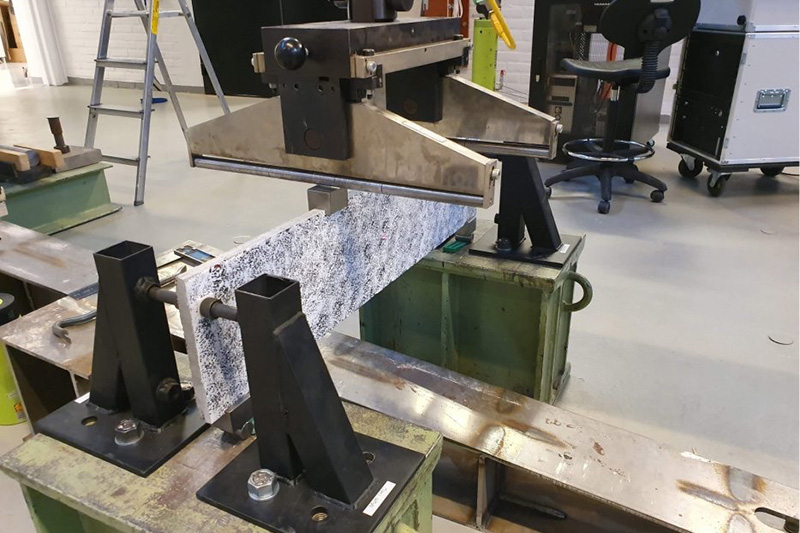Scaling up textile-reinforced concrete
A modelling technique to facilitate the use of textile-reinforced concrete more widely is being proposed at Chalmers University of Technology, Sweden.

By reinforcing concrete with textiles instead of steel, the researchers explain it is possible to use less cement – and also concrete – and create slender, lightweight structures with subsequent lower carbon emissions.
Professor Karin Lundgren, who leads the work, explains, 'You can use less material, as you don’t need [as] thick concrete cover to protect steel reinforcement from corrosion. Further, the concrete you use can include less cement, as the quality is not needed for corrosion protection'.
A previous University of Cambridge, UK, research study shows carbon dioxide emissions can be reduced by up to 65% when comparing vaulted floors with textile reinforcement and traditional solid floors.
The technology to use carbon-fibre textiles already exists, but it has been challenging to produce reliable calculations for complex and vaulted structures, highlights the team at Chalmers. Their modelling technique reportedly reliably describes how textile reinforcement interacts with concrete.
Supplementary cementitious materials, such as fly ash and blast furnace slag, are already used as a substitute for cement clinker, but they are not available in sufficient amounts. Therefore, new alternative binders, such as calcined clays, bio-ashes and volcanic rock (pumice) are of interest.
'However, it is known that the ability of the concrete – with these new binders – to protect the steel from corrosion is an issue. Thus, it is an advantage to combine the new concrete types with non-corroding reinforcement material, such as carbon fibres,' Lundgren shares.
A textile reinforcement mesh comprises yarns, where each yarn consists of thousands of thin filaments (long continuous fibres).
The reinforcement mesh is cast into concrete, and when the textile-reinforced concrete is loaded, the filaments slip against the concrete and each other inside the wire.
A textile yarn in concrete does not reportedly behave as a ‘unit’, which Lundgren says, 'is important when you want to understand the composite material’s ability to carry loads'. The modelling technique developed describes these effects.
She explains, 'You could describe it as the yarn consisting of an inner and an outer core, which is affected to varying degrees when the concrete is loaded. We developed a test and calculation method that describes this interaction. In experiments, we were able to show that our way of calculating is reliable enough even for complex structures.'
Comparing it with traditional reinforcement methods, she says, 'Formally, this material can be used for any load types. So far though, it has been more common in applications where the loads and/or spans are of moderate size. The main qualities are the enhanced durability and sustainability aspects.
'We were looking for a way to calibrate parameters in calculation methods describing the structural behaviour of textile-reinforced concrete…However, when we tried to calibrate parameters, we realised that the analyses were agreeing with experimental results much better when we also introduced an efficiency factor for the stiffness of the reinforcement.'
She continues, 'Further, for the textiles we had tested, the values of the efficiency factors for stiffness and strength were actually very similar. Indicating the stress distribution within a yarn was uneven in a similar manner for small and large stress levels, and that interfilament slip has a larger influence than variation of the filaments’ strength.'
They are developing optimisation methods for larger structures using two-scale techniques.







